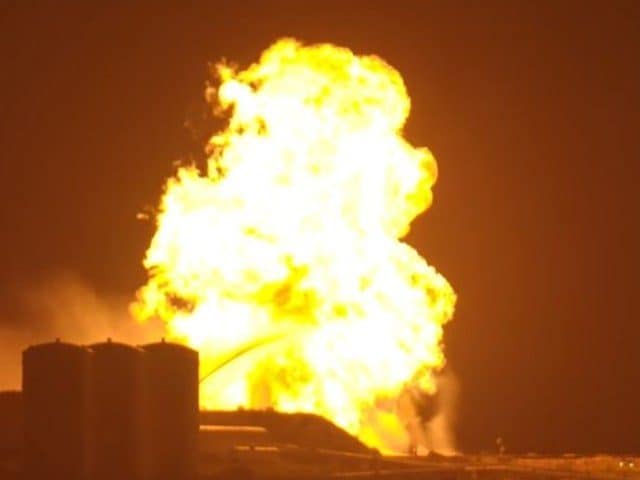
Elon Musk’s SpaceX suffered a setback this week when the firms “Starhopper” small-scale spacecraft exploded into flames during a static fire test.
TechCrunch reports that SpaceX’s Starhopper small-scale test spacecraft exploded into flames after what appeared to be a fuel leak or fuel dump during a static fire test at SpaceX’s facility in Boca Chica, Texas. It is not yet fully clear why the starcraft burst into flames or how badly damaged it was as a result of the malfunction.
The Starhopper is a smaller-scale version of a larger spacecraft the firm is currently developing and is designed to test ideas for the larger version. It is expected that the Starhopper will be capable of performing short space flights called “hops.” The craft was planned to do an untethered test flight this week, hovering at around 20 meters, an improvement on the short tethered flights it has already completed.
Video footage of the event shows that the static fire started and stopped but flames from the rocket’s thrusters continued to burn. A stream of what appears to be water is fired at the craft before the entire rocket bursts into flames, which was captured in high-quality video by SpaceX fans at the event.
It has not yet been revealed what caused the sudden fireball, but some have speculated that there was a fuel dump after the thruster tests that emitted lighter-than-air vapors, which rose and surrounded the rocket, eventually igniting. Photos taken of the vehicle the next day show little damage to the exterior of the starship, but the extent of the damage has not been determined.
The Associated Press reported earlier this month that another SpaceX craft had faced safety issues, from the AP’s report:
A leaky valve caused a SpaceX crew capsule to explode during a ground test back in April, destroying the spacecraft and dealing a blow to the company’s effort to launch astronauts.
The company announced the preliminary results of its accident investigation Monday.
SpaceX’s crew Dragon capsule had just returned, minus astronauts, from a successful test flight to the International Space Station and was undergoing a ground test April 20 at Cape Canaveral Air Force Station. The abort-system thrusters were 100 milliseconds away from firing, when the spacecraft exploded and was destroyed.
It appears that exploding craft is becoming a recurring theme for Elon Musk’s space exploration company.
























